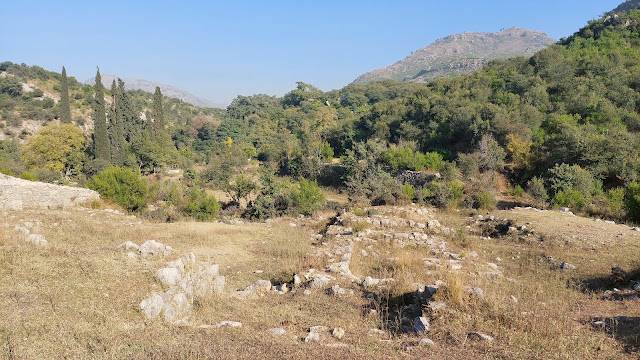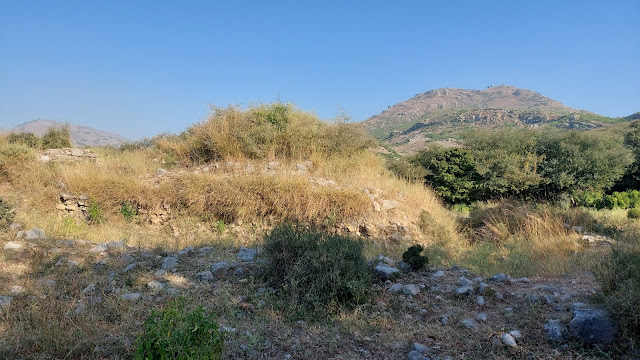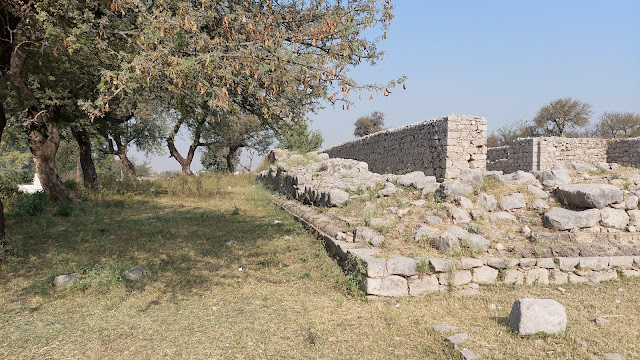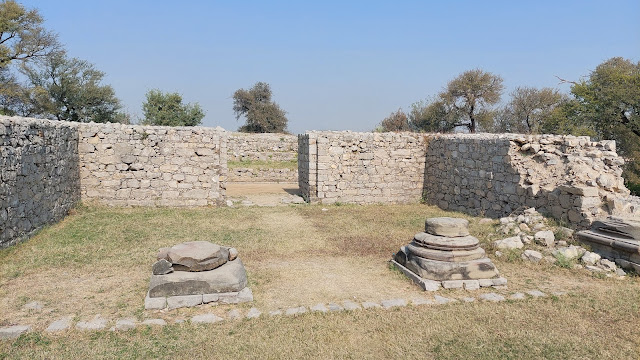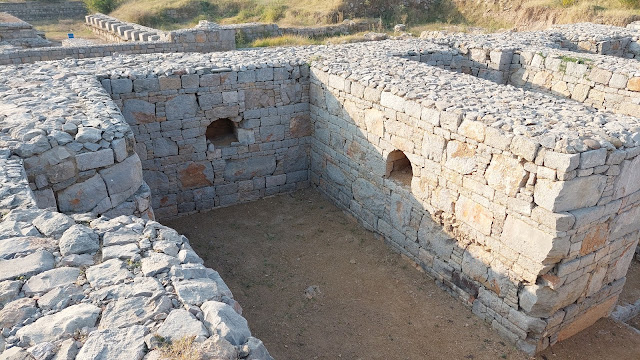Of all the archaeological sites at Taxila, Giri is perhaps the most difficult to reach. Because you have to park your car at least half a kilometer before the Giri Fort and walk through a pass with a stream of cool clear water flowing through it. A wonderful place for fans of natural beauty. The fort has only been partially restored; a section just in front of the restored part is still barely visible. The walls of the fort are also not easily visible. It was constructed probably in the 5th century AD and as the name suggests, was used for defence. The distance from the Taxila museum is a little over 7 kilometers. The area is secluded and beautiful and is surrounded by hills and is very calm and peaceful. It lies within the limits of the capital territory. The Giri fort is located at 33°43'40.6"N, 72°52'49.7"E.
A view of the Giri Fort. (23.11.2021.)
Steps and walls have been restored. (23.11.2021.)
A small valley amidst hills where Giri Fort existed. (23.11.2021.)
Some parts of the site still have to be excavated. (23.11.2021.)
The Giri Stupa is located on the hill at the top right.
A view of the Giri fort from the stupa. (23.11.2021.)
This site has two parts, one is the Giri Fort and the other is a stupa on a nearby hill. But this stupa and the adjacent monastery have still to be excavated and maintained. So to the disappointment of a visitor there is nothing but a heap of rubble at the site of the stupa. The nearby monastery too is mostly buried. It is located at 33°43'41.6"N, 72°53'00.2"E.
Stupa at Giri. (23.11.2021.)
Ruins of the monastery. (23.11.2021.)
A narrow path leading to the stupa on the hill. (23.11.2021.)
A spring on the way to the stupa. (23.11.2021.)
A view of the Giri fort from the stupa hill. (23.11.2021.)

Horses enjoying their natural surroundings. (23.11.2021.)
Unlike some other Gandhara sites at Taxila, this is a little out of the way and difficult to reach. And the excavation too is incomplete. However, it isa good place for the enthusiasts of old ruins, especially for those who have interest in these Buddhist sites. For those having interest in hiking and trekking it could be an enjoyable experience.
Tariq Amir
December 21, 2021.
Islamabad
Note: Giri Fort and Stupa are marked in yellow. Other Gandhara sites are marked in red. You can find details on the same blog.




